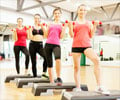Those who are handicapped often suffer pain in the legs or hands though they may not have these organs.

‘Virtual reality may be the key to providing pain relief for paraplegics with neuropathic pain due to the spinal cord lesion.’





"We managed to provoke an illusion: the illusion that the subject's legs were being lightly tapped, when in fact the subject was actually being tapped on the back, above the spinal cord lesion," explains Blanke, lead author of the study and holder of the Foundation Bertarelli Chair in Cognitive Neuroprosthetics. "When we did this, the subjects also reported that their pain had diminished." Now, virtual reality may be the key to providing pain relief for this type of pain, and the solution comes from restoring a sense of touch.
"We tapped the back of the subject near the shoulders and the subject experienced the illusion that the tapping originated from the paralyzed legs," explains Polona Po�eg, co-author of the study and now neuroscientist at the Lausanne University Hospital (CHUV).
"This is because the subject also received visual stimuli of dummy legs being tapped, viewed through the virtual reality headset, so the subject saw them immersively as his or her own legs."
The experimental setup involves a pair of dummy legs, a camera, virtual reality goggles and two rods. The legs are filmed by a camera. In real-time, the video is relayed into virtual reality goggles worn by the paraplegic patient.
Advertisement
The subject therefore receives two stimuli, one tactile on the back, the other visual from the virutal reality display. Despite being consciously aware of being tapped on the back, the subject still begins to feel as though the tapping comes from the paralyzed legs.
The research pushes the limits of how virtual reality can be used to implement conflicting stimuli, with the aim of ultimately manipulating the brain in how it experiences the body for therapeutic reasons.
Based on these findings, the researchers are currently developing virtual reality technology that automatizes visuo-tactile stimulations - an immersive digital therapy - that individuals with spinal cord injury and other chronic pain conditions for regular use at home.
Source-Eurekalert











